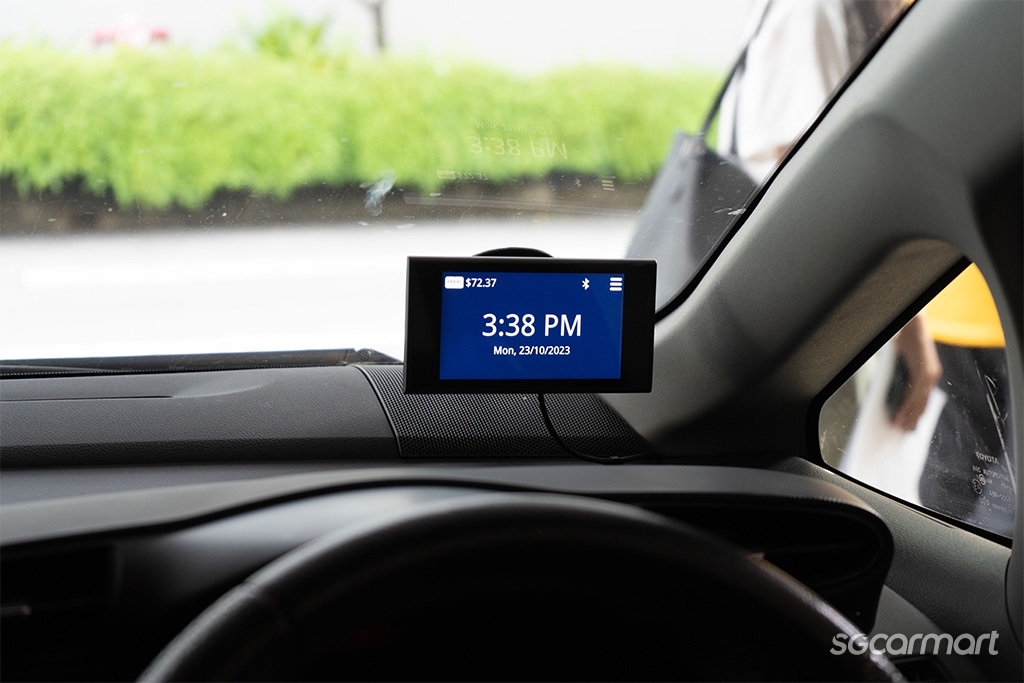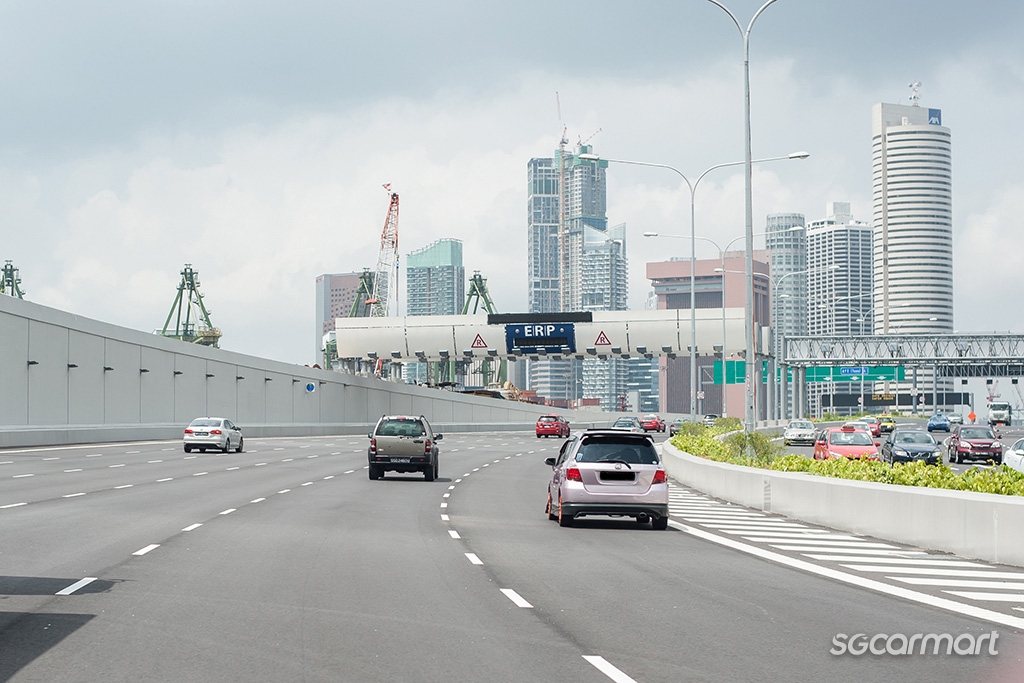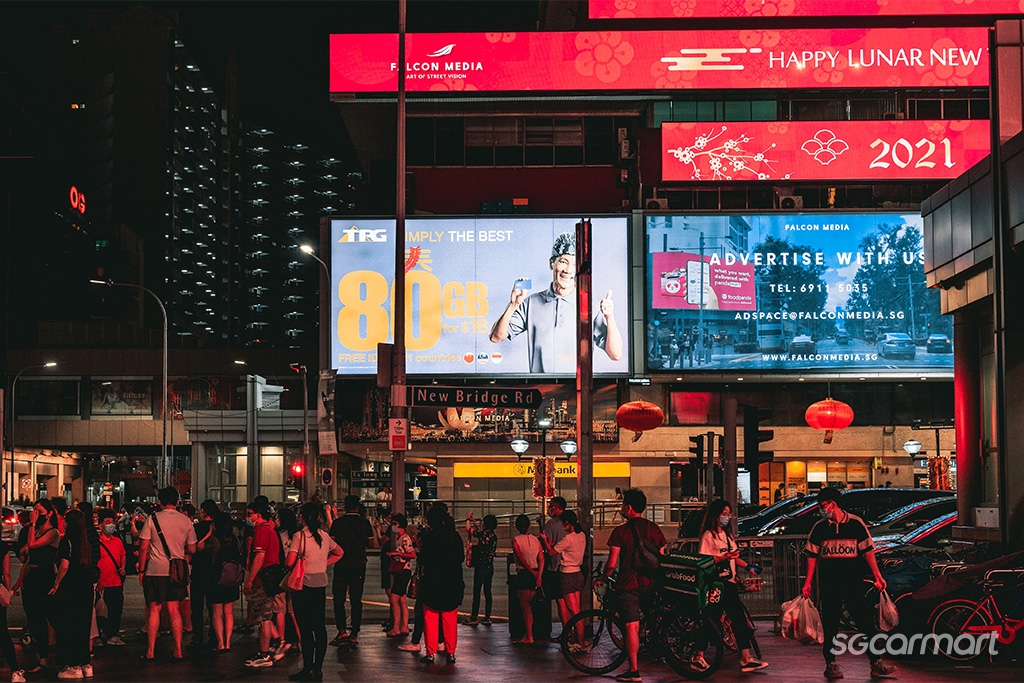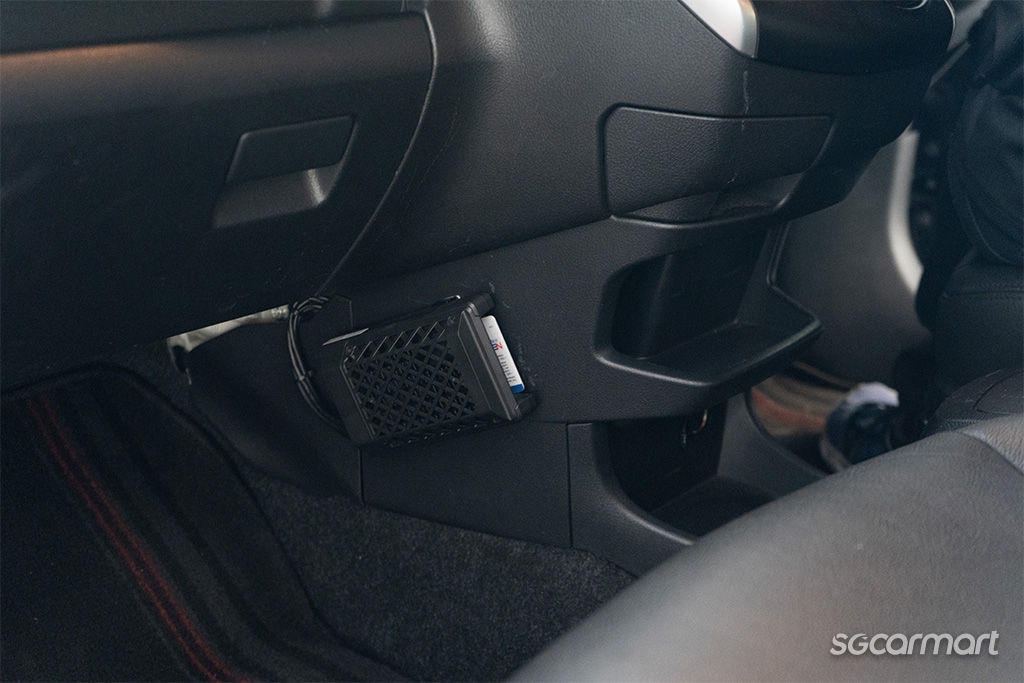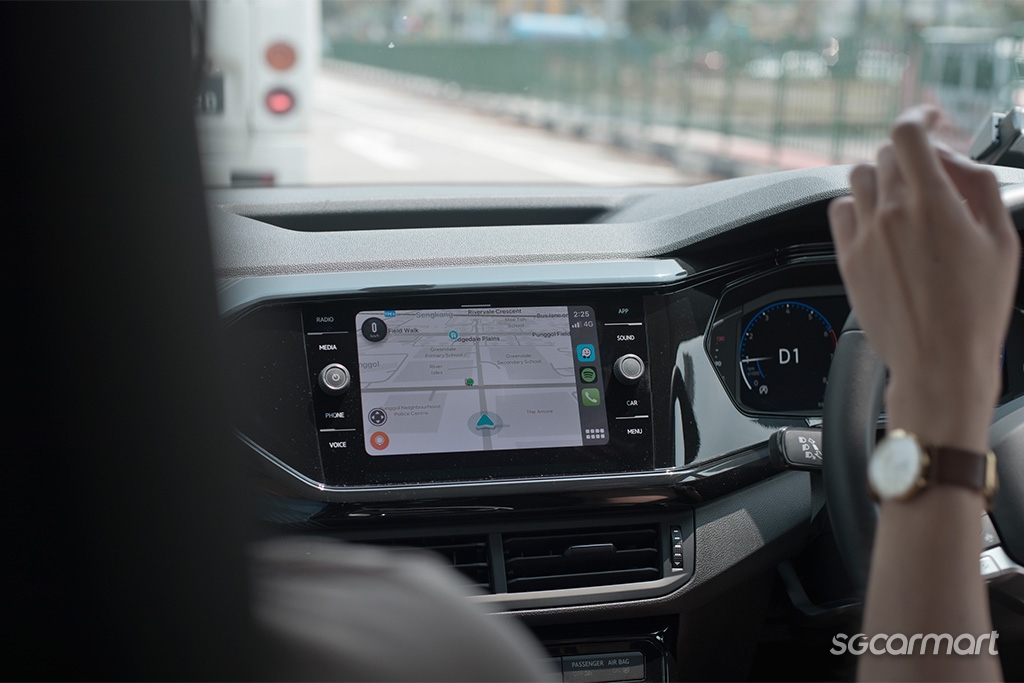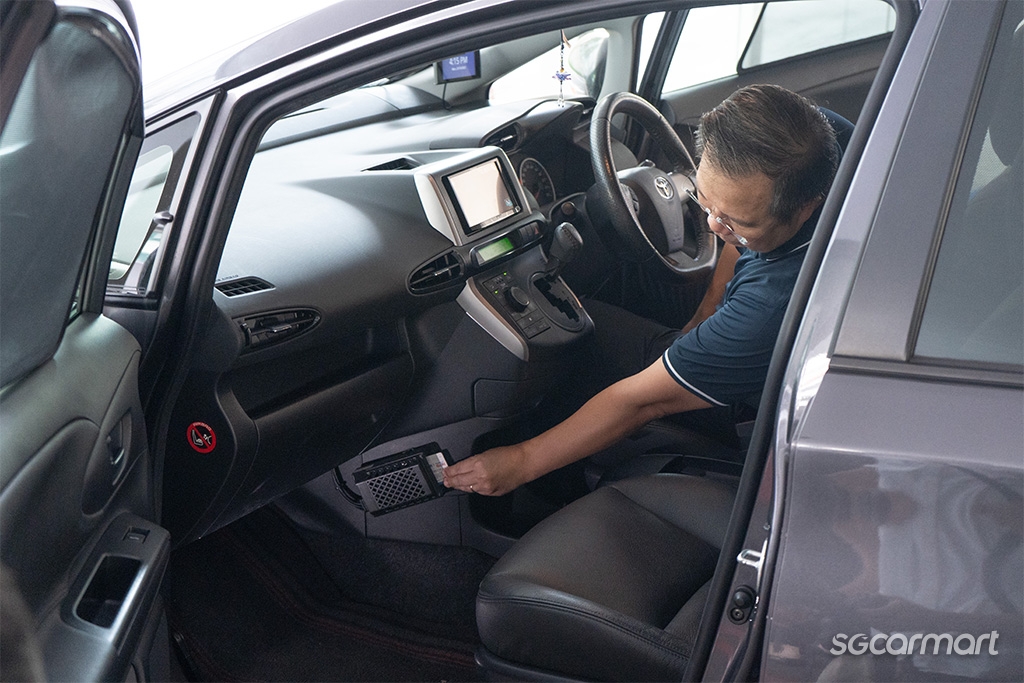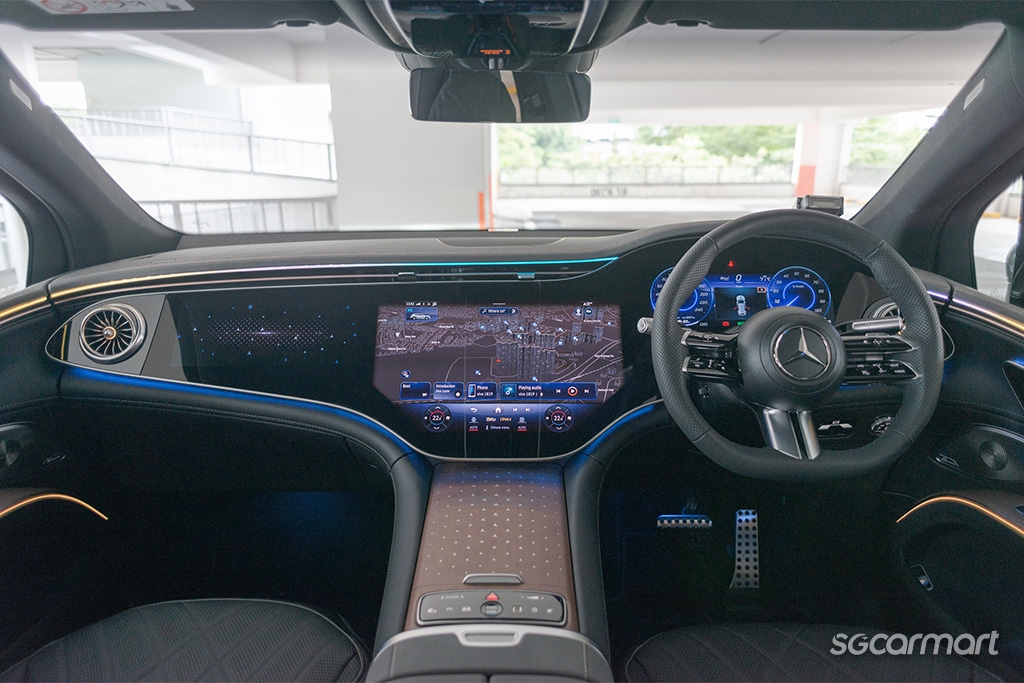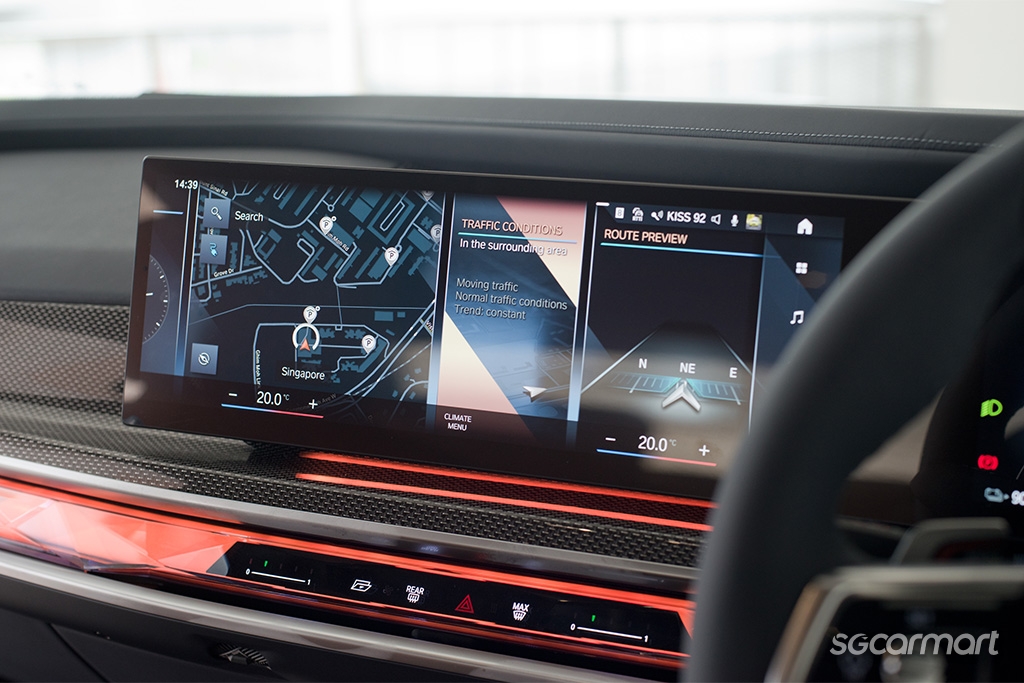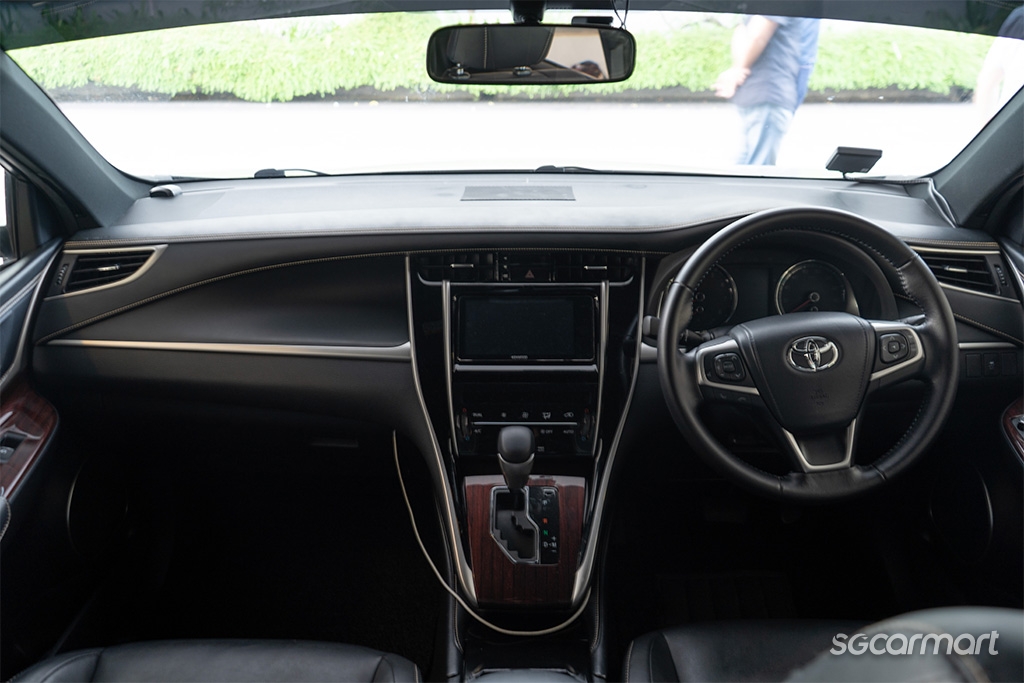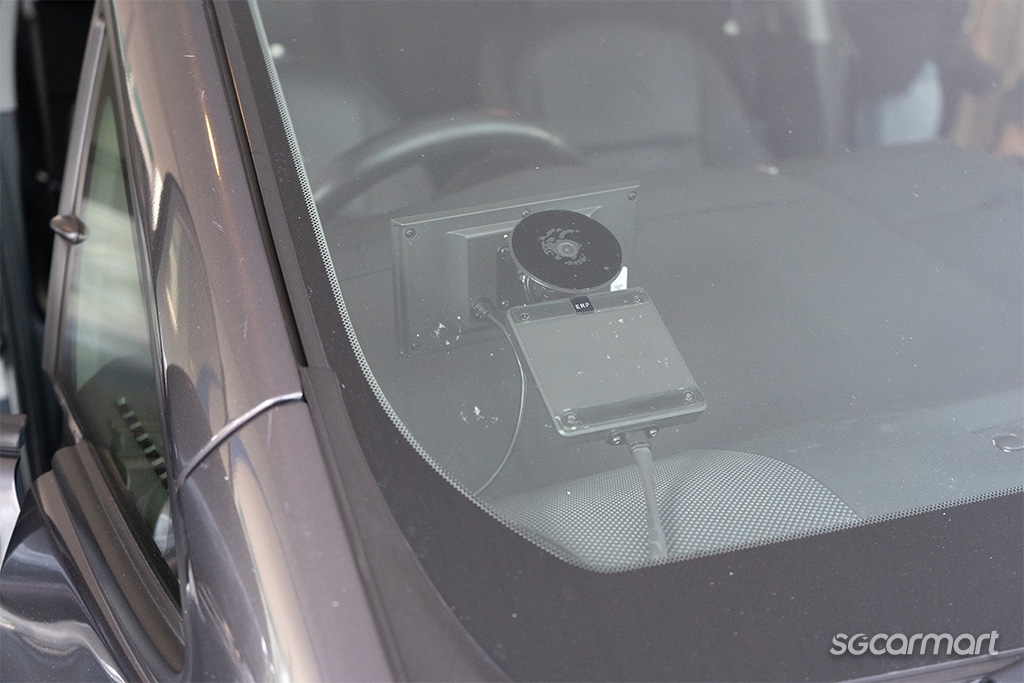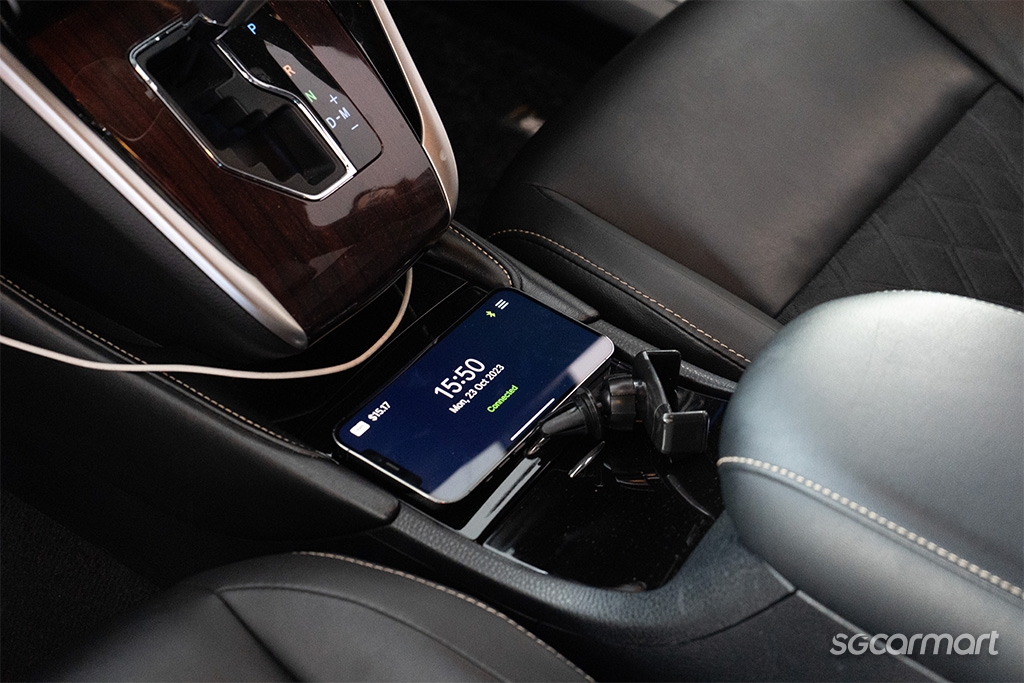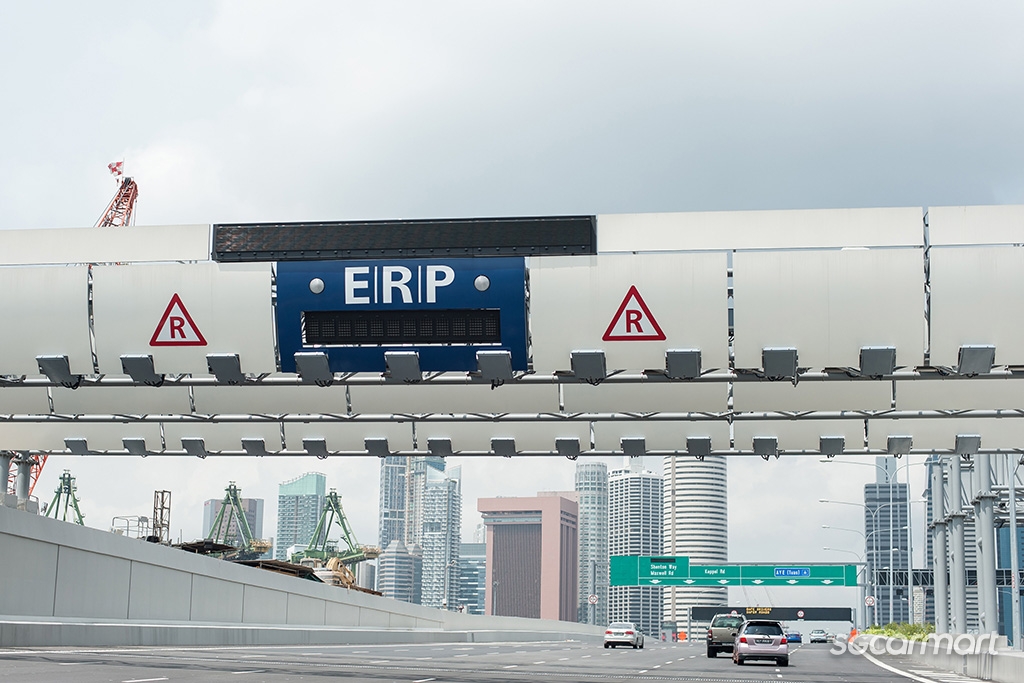ERP 2.0 on-board units: For better or for worse?
08 Nov 2023|9,807 views
"Wait, you mean the ERP has been around for 25 years already?"
This was one of the reactions, among others, since news of the ERP 2.0 on-board unit (OBU) roll-out broke. Some receive the move with grouses; most are indifferent but probably think "it's finally here" at the back of their minds. And then there's a handful who belatedly realise just how long we have lived with the ERP.
We lament the impending retirement of a system that has served us for over two decades. At the same time, we're curious about what is to come, now that it's official. What does this change mean for Singaporeans? More importantly, will the next-generation ERP improve our experience with driving and being on local roads?
Life without physical ERP gantries
Perhaps the biggest difference we will see and feel is the shutting down (removal) of the ERP gantries. It will not happen just yet but eventually, it will.
On 1 November 2023, the Land Transport Authority (LTA) commenced an exercise to replace the in-vehicle unit (IU) in all new and existing Singapore-registered vehicles, with the OBU. It's a huge operation involving close to a million vehicles, and is expected to take about 18 to 24 months to complete.
If you're thinking, why bother? Well, the switch is necessary for our transition to ERP 2.0, which uses a Global Navigation Satellite System (GNSS) to implement road pricing. What this basically means is we will no longer need physical ERP gantries.
In a way, our tomorrow feels like one where the gantries and IU are packed into the three-piece OBU installed in our cars (or single piece for motorcycles). Since supposedly, the OBU is built to do what both systems can do, and more.
The arguments for this change are that it will save us land space from having to erect gantries, and costs less to maintain; ERP charges can also be computed and reflected in real time on the OBU touchscreen.
But beyond these ruminations, what we do want to explore is how this shift to a satellite-based ERP system could possibly impact traffic flow.
Out of sight, out of mind
Without ERP gantries, the charges payable as motorists approach specific traffic-heavy zones, are displayed on the OBU touchscreen. This is intended to preempt motorists more promptly than physical gantries do. It also means the figures that we were so used to seeing on the towering electronic signboards will now be scaled down.
However, we are not the most convinced of the effectiveness of the reduced visual cues. The new model should make for more timely and ready access to data points that inform our decisions on the road. At a cursory glance, it does seem like an improvement.
But there is a specific neural response that the tall physical ERP gantries generate in us, which virtual ones cannot replicate. The stronger the stimulus, the greater the response and, in turn, the impetus to act on that response. Since it's almost impossible to miss seeing the gantries, we are more likely to avoid the zones that charge for ERP. Removing the physical gantries takes away the visual stimulus that triggers the neural response shaping our behaviours when driving.
The now smaller numbers on the touchscreen, albeit closer, could go buried under the clutter of today's digital age. We all have "attentional filters" that streamline the visual stimuli we receive. The information bytes that are let through to our conscious awareness are then those we think matter to us. These are also the bits that register in our mind. Amidst the deluge of information we are already exposed to when on the roads and from the screens in the cabin, the ERP charges that appear on the OBU touchscreen could be filtered out of our consciousness.
The reality today is it will take more effort to grab the driver's attention given the copious information and increasing number of screens in cars. An absence of physical ERP gantries and inability to cut through the clutter could mean people may use the roads indiscriminately, since they don't register whether they have to pay fees. Within Singapore, this also means an implicit disregard for traffic conditions. In the worst case scenario, traffic builds up and congestion happens.
With time, it's possible that we will get used to checking out the OBU touchscreen for important traffic updates. But we all know, from our daily experiences, that it's easier to forget about things - if cues to help us with recall aren't impactful enough.
What could help are considerations that facilitate memory recall and (almost a) laser focus, such as ensuring the visuals on the touchscreen are sufficiently big so we take notice of them. Prompting the ERP charges onscreen at a reasonable distance from the charge-able zone - a measure LTA is currently studying - could be another way to command attention early on.
The in-car experience: Life onboard with the OBU
Life without ERP gantries is one half of the equation.
But considering that most of our time on the roads is spent simply inside the car - regardless of whether driving through virtual ERP zones or not - the second half of considering how life onboard will be like with the OBU, is perhaps even more crucial.
While recapping the OBU's design in detail is probably not necessary, comparing it directly against the IU before proceeding further may be helpful.
Although the antenna - to be affixed where the IU currently is - is thinner and smaller, the controversial bulk of the OBU comes from the touchscreen (placed just before it) and the processing unit, envisioned for installation at the front passenger footwell "by default". The latter doesn't just function as the brain of the three-piece system, but will also serve as the receptor for your payment card.
One more screen (and more movement)
Touching on the physical design of the OBU brings us to the first question: Do we really want more screens in our cars today?
On the one hand, it's worth reiterating that drivers can now opt out of fitting the touchscreen on their windscreens (we'll talk more about what this means in a bit). Still, considering that motorists are "strongly encouraged to install all three OBU components to access the full range of features", let's consider the driver who goes ahead with all three pieces.
The modern car industry has taken a good number of years to declutter the windscreen and dashboard.
Infotainment systems were less extensive in the past. Before smartphones, we even used to have add-on satnav devices (remember when TomTom was a thing?).
But even phone-holders are slowly growing obsolete. The increasing standardisation of Apple CarPlay and Android Auto connectivity today is slowly eradicating the need to dump extra clutter onto the dashboard by integrating our de-facto media and navigation apps within car infotainment screens.
Most importantly, the latter (including Waze and Google Maps) are already fully capable of providing sophisticated real-time alerts that help to inform the routes we take on our daily journeys. As such, an additional touchscreen display - no matter how compact its size - inevitably feels like a step backward.
Admittedly, there is one group of drivers who will always have to deal with some clutter - and for them, the OBU's presence is likely to be felt most acutely: Taxi and PHV-drivers. Respectively, they already have to deal with additional in-car screens and smartphones when operating their ride-hail systems. Now, the OBU's new touchscreen will mark yet another slab to keep visual tabs on.
From a broader perspective, we are also in an era where the safety of in-car screens is still being debated, and where consumers have also not made their minds up yet on whether constant notifications and alerts actually help to improve the driving experience. For now, it does not seem that the OBU will help to allay these concerns.
The other additional component that requires some thinking about is the processing unit, which acts as a receptor for the CEPAS card.
We've had a proper in-person look at demo vehicles with the OBU fitted: One with the processing unit mounted along the front passenger footwell, and the other with the unit mounted underneath the glovebox. Neither can match the simplicity of operation provided by the IU.
The CEPAS card is still relatively accessible in the first instance - requiring some light bending over by the average-sized driver - but this still feels far more complicated than simply reaching forward for the IU. In the latter setup, you'd have to come to a complete stop to retrieve the card.
Let's also talk the aesthetic quality of the OBU - which may seem superficial as a consideration, but is likely important to the average driver.
The cabin is a highly personal space after all, and this concern is also increasingly relevant to modern cars as manufacturers move more and more towards minimalistic and pleasant-looking dashboards. The Hyperscreen of your Merc, or the Curved Display of your BMW already properly curates the digital real estate in your car nicely; why ruin it unnecessarily?
Car manufacturers have already expended painstaking efforts into ensuring that their dashboards are pleasing to the eye - with huge screens no less; the additional display inevitably feels like it runs contrary to that
More clunky than nefarious
It's important to reiterate that the OBU's design is more clunky than it is nefarious.
Admittedly, many of the potential issues raised above can also be circumvented by committing to the LTA's suite of new technologies. Virtual, digital top-ups for your CEPAS card mean you'll hardly have to touch your processing unit. Meanwhile, choosing not to install the touchscreen display helps significantly for those who don't want the bulk - you can simply run an app supporting the OBU on your smartphone, and connect it to the rest of the system via Bluetooth.
The LTA has even suggested that integration of Android Auto and Apple CarPlay may be possible as developers start working on third-party apps, stating: "The Software Development Kit released by LTA allows OBU information to be displayed on mobile apps. If both the app and the information system supports Apple Carplay and Android Auto, OBU information can be displayed on the infotainment display." That should bring us back slightly to the uncluttered dashboards carmakers have been striving towards.
Nonetheless, the fact remains that the most notable quality of ERP 2.0 is turning out to be its biggest problem.
The do-it-all, and (maybe) have-it-all?
The OBU wants to do everything.
It wants to replace the blue-white gates towering over our highways and become a 'virtual ERP gantry', yet also tells you how much money you have left in your card; it wants to give you real-time traffic alerts - and thus potentially replace physical electronic signboards someday - yet also functions as your parking app (at some point in the future).
In trying to declutter the physical and digital environment outside of the car, it appears to have brought everything inside instead. Singapore's roads may be less cluttered - less congested even - but our car cabins will have to pay the price.
Regardless of how negatively or nonchalantly you feel about the OBU, the extra complexity ERP 2.0 is now introducing to the driving experience is one that we have to confront. Enough attention from the motorist is being taken away by the need to watch out for traffic and navigate the streets; adding another screen to the equation will require our dwindling attention bandwidth to be further fractionated.
Not to mention the scaled-down visual cues with the eventual removal of the physical ERP gantries. These could only make driving an even more stressful activity than it is. Singapore's congestion management system is the one thing that cannot be debated. In fact, as we await our notification SMSes, letters and emails for installation, it is the thought of confronting the impending complexity that feels most uncomfortable right now.
At its core, the new system runs counter to the habits we've formed over the years - such as expecting an ERP gantry to loom over when we're driving onto the KPE at 8:00am. Or casually pulling one's CEPAS card out of the IU slot for a top-up when the beeps and red glows have returned. Ostensible design flaws aside, it is also this counter-intuition surfaced by the OBU that appears to be grating on us now.
Having said that, we cannot claim to know whether ERP 2.0 will make our lives better or worse - firstly, because we haven't actually lived with the system yet, and secondly, because things may change over time. The only thing we can definitively claim right now is that things are shaping up to be, well, very different. One day, the extra bites of information provided by the OBU may well be absorbed into your car screen; the inconvenience of reaching out for one's CEPAS card may also accelerate the switch to digital payments.
Technology is constantly shifting, and habits will be reshaped. Just as the IU has slowly become an unquestioned part of the car dashboard over the past few decades, so too, will the OBU likely fade unspectacularly into the fabric of a motorist's life in Singapore.
Here are a few other stories that may interest you!
Why building more roads doesn't ease congestion
What going car-lite actually entails and why it isn't as extreme as it sounds
"Wait, you mean the ERP has been around for 25 years already?"
This was one of the reactions, among others, since news of the ERP 2.0 on-board unit (OBU) roll-out broke. Some receive the move with grouses; most are indifferent but probably think "it's finally here" at the back of their minds. And then there's a handful who belatedly realise just how long we have lived with the ERP.
We lament the impending retirement of a system that has served us for over two decades. At the same time, we're curious about what is to come, now that it's official. What does this change mean for Singaporeans? More importantly, will the next-generation ERP improve our experience with driving and being on local roads?
Life without physical ERP gantries
Perhaps the biggest difference we will see and feel is the shutting down (removal) of the ERP gantries. It will not happen just yet but eventually, it will.
On 1 November 2023, the Land Transport Authority (LTA) commenced an exercise to replace the in-vehicle unit (IU) in all new and existing Singapore-registered vehicles, with the OBU. It's a huge operation involving close to a million vehicles, and is expected to take about 18 to 24 months to complete.
If you're thinking, why bother? Well, the switch is necessary for our transition to ERP 2.0, which uses a Global Navigation Satellite System (GNSS) to implement road pricing. What this basically means is we will no longer need physical ERP gantries.
In a way, our tomorrow feels like one where the gantries and IU are packed into the three-piece OBU installed in our cars (or single piece for motorcycles). Since supposedly, the OBU is built to do what both systems can do, and more.
The arguments for this change are that it will save us land space from having to erect gantries, and costs less to maintain; ERP charges can also be computed and reflected in real time on the OBU touchscreen.
But beyond these ruminations, what we do want to explore is how this shift to a satellite-based ERP system could possibly impact traffic flow.
Out of sight, out of mind
Without ERP gantries, the charges payable as motorists approach specific traffic-heavy zones, are displayed on the OBU touchscreen. This is intended to preempt motorists more promptly than physical gantries do. It also means the figures that we were so used to seeing on the towering electronic signboards will now be scaled down.
However, we are not the most convinced of the effectiveness of the reduced visual cues. The new model should make for more timely and ready access to data points that inform our decisions on the road. At a cursory glance, it does seem like an improvement.
But there is a specific neural response that the tall physical ERP gantries generate in us, which virtual ones cannot replicate. The stronger the stimulus, the greater the response and, in turn, the impetus to act on that response. Since it's almost impossible to miss seeing the gantries, we are more likely to avoid the zones that charge for ERP. Removing the physical gantries takes away the visual stimulus that triggers the neural response shaping our behaviours when driving.
The now smaller numbers on the touchscreen, albeit closer, could go buried under the clutter of today's digital age. We all have "attentional filters" that streamline the visual stimuli we receive. The information bytes that are let through to our conscious awareness are then those we think matter to us. These are also the bits that register in our mind. Amidst the deluge of information we are already exposed to when on the roads and from the screens in the cabin, the ERP charges that appear on the OBU touchscreen could be filtered out of our consciousness.
The reality today is it will take more effort to grab the driver's attention given the copious information and increasing number of screens in cars. An absence of physical ERP gantries and inability to cut through the clutter could mean people may use the roads indiscriminately, since they don't register whether they have to pay fees. Within Singapore, this also means an implicit disregard for traffic conditions. In the worst case scenario, traffic builds up and congestion happens.
With time, it's possible that we will get used to checking out the OBU touchscreen for important traffic updates. But we all know, from our daily experiences, that it's easier to forget about things - if cues to help us with recall aren't impactful enough.
What could help are considerations that facilitate memory recall and (almost a) laser focus, such as ensuring the visuals on the touchscreen are sufficiently big so we take notice of them. Prompting the ERP charges onscreen at a reasonable distance from the charge-able zone - a measure LTA is currently studying - could be another way to command attention early on.
The in-car experience: Life onboard with the OBU
Life without ERP gantries is one half of the equation.
But considering that most of our time on the roads is spent simply inside the car - regardless of whether driving through virtual ERP zones or not - the second half of considering how life onboard will be like with the OBU, is perhaps even more crucial.
While recapping the OBU's design in detail is probably not necessary, comparing it directly against the IU before proceeding further may be helpful.
Although the antenna - to be affixed where the IU currently is - is thinner and smaller, the controversial bulk of the OBU comes from the touchscreen (placed just before it) and the processing unit, envisioned for installation at the front passenger footwell "by default". The latter doesn't just function as the brain of the three-piece system, but will also serve as the receptor for your payment card.
One more screen (and more movement)
Touching on the physical design of the OBU brings us to the first question: Do we really want more screens in our cars today?
On the one hand, it's worth reiterating that drivers can now opt out of fitting the touchscreen on their windscreens (we'll talk more about what this means in a bit). Still, considering that motorists are "strongly encouraged to install all three OBU components to access the full range of features", let's consider the driver who goes ahead with all three pieces.
The modern car industry has taken a good number of years to declutter the windscreen and dashboard.
Infotainment systems were less extensive in the past. Before smartphones, we even used to have add-on satnav devices (remember when TomTom was a thing?).
But even phone-holders are slowly growing obsolete. The increasing standardisation of Apple CarPlay and Android Auto connectivity today is slowly eradicating the need to dump extra clutter onto the dashboard by integrating our de-facto media and navigation apps within car infotainment screens.
Most importantly, the latter (including Waze and Google Maps) are already fully capable of providing sophisticated real-time alerts that help to inform the routes we take on our daily journeys. As such, an additional touchscreen display - no matter how compact its size - inevitably feels like a step backward.
Admittedly, there is one group of drivers who will always have to deal with some clutter - and for them, the OBU's presence is likely to be felt most acutely: Taxi and PHV-drivers. Respectively, they already have to deal with additional in-car screens and smartphones when operating their ride-hail systems. Now, the OBU's new touchscreen will mark yet another slab to keep visual tabs on.
From a broader perspective, we are also in an era where the safety of in-car screens is still being debated, and where consumers have also not made their minds up yet on whether constant notifications and alerts actually help to improve the driving experience. For now, it does not seem that the OBU will help to allay these concerns.
The other additional component that requires some thinking about is the processing unit, which acts as a receptor for the CEPAS card.
We've had a proper in-person look at demo vehicles with the OBU fitted: One with the processing unit mounted along the front passenger footwell, and the other with the unit mounted underneath the glovebox. Neither can match the simplicity of operation provided by the IU.
The CEPAS card is still relatively accessible in the first instance - requiring some light bending over by the average-sized driver - but this still feels far more complicated than simply reaching forward for the IU. In the latter setup, you'd have to come to a complete stop to retrieve the card.
Let's also talk the aesthetic quality of the OBU - which may seem superficial as a consideration, but is likely important to the average driver.
The cabin is a highly personal space after all, and this concern is also increasingly relevant to modern cars as manufacturers move more and more towards minimalistic and pleasant-looking dashboards. The Hyperscreen of your Merc, or the Curved Display of your BMW already properly curates the digital real estate in your car nicely; why ruin it unnecessarily?
Car manufacturers have already expended painstaking efforts into ensuring that their dashboards are pleasing to the eye - with huge screens no less; the additional display inevitably feels like it runs contrary to that
More clunky than nefarious
It's important to reiterate that the OBU's design is more clunky than it is nefarious.
Admittedly, many of the potential issues raised above can also be circumvented by committing to the LTA's suite of new technologies. Virtual, digital top-ups for your CEPAS card mean you'll hardly have to touch your processing unit. Meanwhile, choosing not to install the touchscreen display helps significantly for those who don't want the bulk - you can simply run an app supporting the OBU on your smartphone, and connect it to the rest of the system via Bluetooth.
The LTA has even suggested that integration of Android Auto and Apple CarPlay may be possible as developers start working on third-party apps, stating: "The Software Development Kit released by LTA allows OBU information to be displayed on mobile apps. If both the app and the information system supports Apple Carplay and Android Auto, OBU information can be displayed on the infotainment display." That should bring us back slightly to the uncluttered dashboards carmakers have been striving towards.
Nonetheless, the fact remains that the most notable quality of ERP 2.0 is turning out to be its biggest problem.
The do-it-all, and (maybe) have-it-all?
The OBU wants to do everything.
It wants to replace the blue-white gates towering over our highways and become a 'virtual ERP gantry', yet also tells you how much money you have left in your card; it wants to give you real-time traffic alerts - and thus potentially replace physical electronic signboards someday - yet also functions as your parking app (at some point in the future).
In trying to declutter the physical and digital environment outside of the car, it appears to have brought everything inside instead. Singapore's roads may be less cluttered - less congested even - but our car cabins will have to pay the price.
Regardless of how negatively or nonchalantly you feel about the OBU, the extra complexity ERP 2.0 is now introducing to the driving experience is one that we have to confront. Enough attention from the motorist is being taken away by the need to watch out for traffic and navigate the streets; adding another screen to the equation will require our dwindling attention bandwidth to be further fractionated.
Not to mention the scaled-down visual cues with the eventual removal of the physical ERP gantries. These could only make driving an even more stressful activity than it is. Singapore's congestion management system is the one thing that cannot be debated. In fact, as we await our notification SMSes, letters and emails for installation, it is the thought of confronting the impending complexity that feels most uncomfortable right now.
At its core, the new system runs counter to the habits we've formed over the years - such as expecting an ERP gantry to loom over when we're driving onto the KPE at 8:00am. Or casually pulling one's CEPAS card out of the IU slot for a top-up when the beeps and red glows have returned. Ostensible design flaws aside, it is also this counter-intuition surfaced by the OBU that appears to be grating on us now.
Having said that, we cannot claim to know whether ERP 2.0 will make our lives better or worse - firstly, because we haven't actually lived with the system yet, and secondly, because things may change over time. The only thing we can definitively claim right now is that things are shaping up to be, well, very different. One day, the extra bites of information provided by the OBU may well be absorbed into your car screen; the inconvenience of reaching out for one's CEPAS card may also accelerate the switch to digital payments.
Technology is constantly shifting, and habits will be reshaped. Just as the IU has slowly become an unquestioned part of the car dashboard over the past few decades, so too, will the OBU likely fade unspectacularly into the fabric of a motorist's life in Singapore.
Here are a few other stories that may interest you!
Why building more roads doesn't ease congestion
What going car-lite actually entails and why it isn't as extreme as it sounds
Thank You For Your Subscription.


















